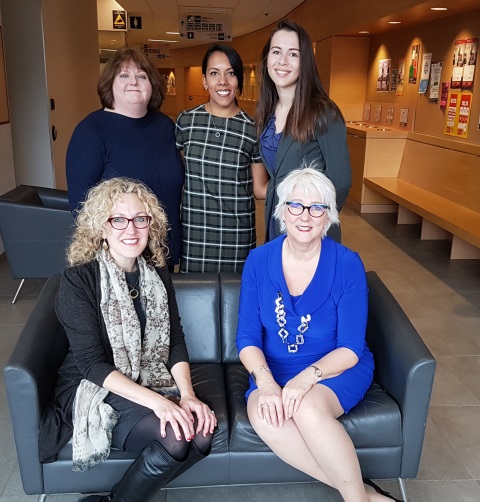
By Dr. Chantal Backman, Michelle Crick, Danielle Cho-Young, Megan Scharf
The world’s senior population is growing fast. In 2015, there were approximately 900 million people over the age of 60, according to the United Nations (UN). The UN projects that the global senior population will grow to 1.4 billion by 2030. With this growing population, the number of people impacted by an age-related disease or health condition will also skyrocket. In fact, according to the Journal of the American Geriatrics Society, more than 90 per cent of adults will live with a deficit in at least one of their five senses.
As we age, the five senses — hearing, vision, taste, smell, and touch — become less acute. Age-related sensory changes may create difficulties in communicating, in enjoying activities and in staying connected to people. Sensory changes can affect day-to-day activities and can often lead to increased feelings of isolation and depression.
Little awareness exists regarding the negative effects sensory impairments have on seniors living in long-term care communities. Without proper consideration of the five senses, seniors are at greater risk for lower quality of life and for poor health outcomes. Sensory impairment can mask an individual’s true level of competence; having more than one impaired sense can further prevent seniors from participating in daily activities or in performing basic tasks.
Through a research collaboration between the University of Ottawa LIFE Research Institute and Sodexo, we developed a sense-sensitive guide to raise awareness about the impact of sensory loss and its impact on the quality of life in residents living in long-term care homes. By sharing common practices and using our soon to be released audit tool, long-term care homes will be better equipped to offer better quality services to seniors by providing a “sense-sensitive” environment. The audit tool provides a step-by-step approach to determining how sense-sensitive a specific long-term care home is in reality. Following an initial review of the long-term care homes’ physical design and an assessment of its policies and procedures, the audit is divided into four parts: (1) Interviews of residents to determine perceptions of issues related to the senses, (2) Interviews of staff to determine perceptions of issues related to the senses, (3) Walkthrough of the environment with staff and residents to explore deficiencies in the physical environment, and (4) Food tasting with staff and residents to determine its level of taste/smell sense-sensitivity.
Our research aims to share knowledge that can be used by residents, families, care providers, leaders, and policy-makers to optimize the environment for residents with sensory impairments. Understanding the impact of sensory impairments within the context of long-term care homes, and knowing what to do about them will lead to better person—and family—centered care and ultimately, improve the quality of life for residents and their families.
The results of our innovative research provides insight into the complexity of the interactions between the five senses, insight into the relationship between person and family-centered care and sensory decline, and awareness into the degree that sensory decline can “mask” a person’s competence making it appear that they suffer from cognitive or other physical deficits.
Long-term care homes need to consider how individuals with sensory impairments interact with their environment. For instance, they may not respond to verbal instructions (hearing), they may not eat because they cannot see the food on their plate (vision), or they may fall more frequently (vision and touch). There are many strategies that can be used to minimize the impact these sensory losses might have on the daily life of residents as well as on their families and care providers. For example, if a senior has a hearing problem, a simple strategy is to consider the competing noises in the facility and reduce them if possible. If an older adult has a vision problem, a long-term care community might consider whether the lighting levels are suitable in the different areas of the facility; or to ensure that the floor covering doesn’t create glare and contribute to falls.
We believe that everyone — residents, families, care providers and leaders — can contribute to changing environments and changing approaches so that those with sensory loss have the best possible chance of engaging with others, regardless of other health challenges.
If you are interested in becoming involved in this research, we are seeking organizations interested in piloting the prototype audit tool. Please contact the principal investigator Dr. Chantal Backman at chantal.backman@uottawa.ca.

